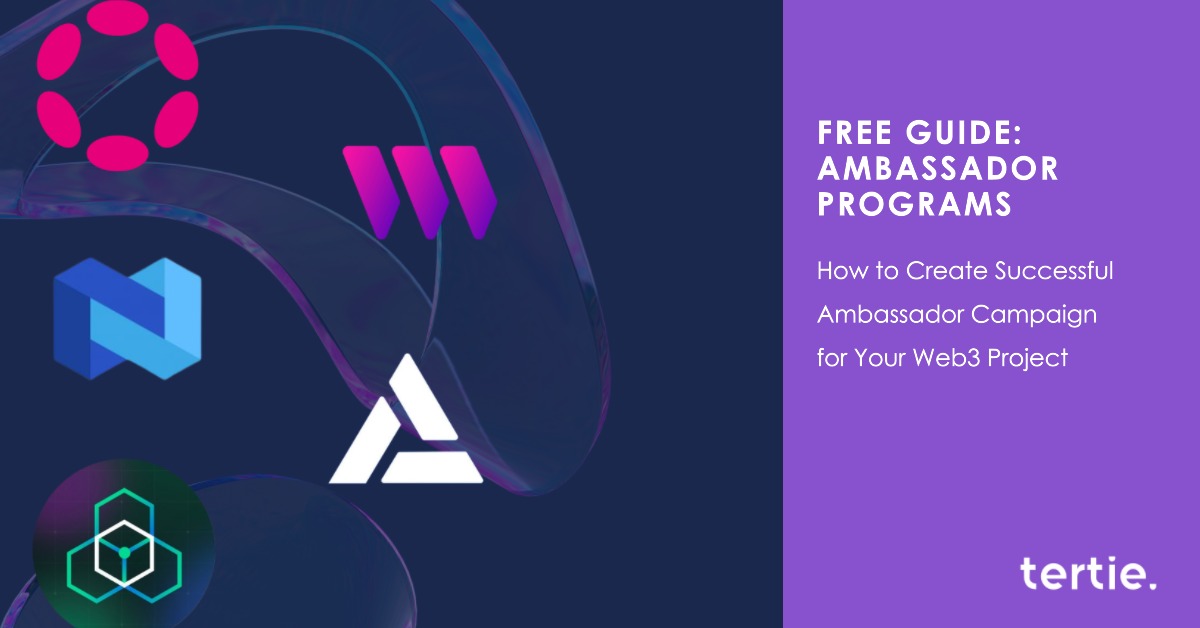The past year has seen a lot of chat around the Layer 2 (L2) solutions with the arrival of platforms including Optimism, Arbitrum and more recently Mantle. But which L2 project, in the sub-$100M market cap, has the potential to reach the $1B group in the next bull market? We’ll review this based on a few factors, including how wide-reaching their marketing efforts are.
But firstly, what are Layer 2s, and what do they do?
Layer 2s are off-chain solutions designed to improve the scalability of blockchain networks, such as Ethereum, by handling transactions off the primary blockchain (Layer 1). As commonly used, think of them as extra workstations in a restaurant kitchen that help process orders more efficiently.
Another example? Imagine Layer 1 as the main highway where all the traffic passes by (transactions occur), but it can only accommodate a limited number of vehicles (transactions) at a time. Layer 2s are like service lanes that run parallel to the main highway, allowing more vehicles to move simultaneously without clogging the main route.
Ethereum uses Layer 2 solutions like Optimistic and zero-knowledge rollups, and platforms such as Arbitrum, Optimism, Loopring, and zkSync, to increase the number of transactions processed per second. This significantly improves the user experience by making transactions faster and cheaper.
With Layer 1 taking care of network security, data availability, and decentralization, Layer 2 solutions focus on scaling the transaction capabilities. Layer 2s are crucial because they work hand in hand with Layer 1 to make the blockchain faster, more efficient, and user-friendly, thereby enhancing the practicality of blockchain technology.
Here’s a look at some L2 projects in the sub-$100M market cap with a quick overview:
SKALE Network (SKL)
CMP: $0.02
ATH: $1.22
Current Market Cap: $102 million
About SKALE Network: SKALE is an open-source, decentralized platform that enhances the scalability of Web3 applications. It creates custom, fast, Ethereum-compatible blockchains on top of Ethereum. Developers can use SKALE chains for faster transaction processing and smart contract execution. They also support decentralized storage, rollup contracts, and machine learning via the Ethereum Virtual Machine (EVM). SKALE aims to make Web3 apps as cost-effective and efficient as traditional apps. SKALE can also be considered as a modular L1/L2 hybrid Ethereum-compatible network.
Here’s a recent update on SKALE: As per Coinseeker, SKALE ranks as the top L2 network by total transactions sent to Dapp’s smart contracts in 30 days.
Who’s behind SKALE? At the helm are co-founders Jack O’Holleran and Stan Kladko, PhD. Jack’s resume includes co-founder of Aktana, co-founder of IncentAlign, and executive positions at Good Technology, and Motorola. Stan’s resume includes Physics at Max Planck Institute, Los Alamos National Laboratory, and Stanford. SunMicrosystems Java Virtual Machine team, early 2000’s Crypto start-ups Ingrian Networks and The Crypto Lab, co-founder of Cloudessa and Galactic Exchange before starting SKALE. Here’s a look at the team page: https://skale.space/about
Tertie’s marketing tidbits:
- Their blog provides a very comprehensive and up-to-date perspective on all these developments at SKALE. This month, for example, has seen 12 articles published. This is a massive plus point and something other projects should take heed of. Keeping the community informed about what you’re doing is a massive plus point in the Web3 domain. There’s even a monthly recap with a lot of interesting pointers for the community.
- The same thing is seen in their social channels. Their X-App channel, for one, boasts 125K followers: engagement rates though are subdued. However, they are doing a good job here too in posting regularly. The content posted has a nice mix of visuals.
Cartesi (CTSI)
CMP: $0.12
ATH: $1.74
Current Market Cap: $93 million
About Cartesi: Rollups are a solution to improve the scalability of blockchains by performing operations off-chain, which improves processing speeds and enables more complex logic in DApps. Rollups ensure the legitimacy of transactions either via validity proofs, which are immediate but expensive, or fraud proofs, which are dependent on challenges and confirmations. Cartesi takes a specific approach using Optimistic Rollups with interactive fraud proofs. The Cartesi Machine is at the heart of this model, enabling reliable off-chain operations. Combining the Optimistic Rollups framework with the Cartesi Machine Emulator makes it possible to use Linux-compatible tools and overcome the computational scalability limitations of Ethereum.
Who’s behind Cartesi? Cartesi was founded in 2018 by Erick de Moura, Augusto Teixeira, Diego Nehab and Colin Steil. The founding team initially got into blockchain as a result of one of the founders, Augusto Teixeira, being friends with Serguei Popov, the founder of IOTA. Serguei became one of Cartesi’s earliest investors and advisors.
Here’s more on the team.
Tertie’s marketing tidbits:
- They’ve got a cool and up-to-date website. The homepage also has a list of Upcoming events, which is refreshing to see.
- Great blog with regular content keeping the community informed. It’s also written in a very clear and easy-to-follow manner.
- Twitter is very active; engagement rates here too are subdued (guess it’s a bear market trend). Not too much activity on a $CTSI search
- Other than this they have a Telegram and Discord channel for the community.
MetisDAO (METIS)
CMP: $12.6
ATH: $323
Current Market Cap: $55 million
About Metis: Metis is a general-purpose, optimistic rollup built on Ethereum. Metis protocol can support smart contract development, decentralized applications (DApps), and more scalable transaction processing. As with other L2 platforms, Metis aims to solve the scalability trilemma and simultaneously achieve security, scalability, and decentralization. It also aims to create an affordable and scalable environment for apps, businesses, and the development of the DAO community.
Who’s behind Metis? Metis has been built and supported by the MetisLab Foundation. Metis Labs is a member of Genesi DAC, a venture capitalist decentralized autonomous corporation (DAC) spearheaded by Natalia Ameline (Vitalik Buterin’s mother ⚡️). Co-Founder and Product Lead Kevin Liu also co-founded Token Economy Labs Inc. Yuan Siu, the technology lead, makes up the remaining founding members. Along with Natalie Ameline, Elena Sinelnikova co-founded Cryptochicks, of which she was also the CEO.
Tertie’s marketing tidbits:
- They’ve revamped their site (just launched it yesterday). Long overdue. A lot more information, to the point.
- Twitter’s active. Some more visual content would be great here
- They’ve got a YT channel where they are posting content; however, it seems pretty dead in terms of viewership. A lot of this information can be repurposed for social media.
Boba Network (BOBA)
CMP: $0.10
ATH: $7.93
Current Market Cap: $38 million
About Boba Network: As per Messari, Boba Network is a Layer-2 optimistic rollup scaling solution currently built on Ethereum. Boba Network facilitates cheaper and faster transactions as well as a unique new technology, Hybrid Compute. Hybrid Compute enables Web3 and Web2 interoperability, allowing smart contracts to call upon any external Web2 API to execute complex algorithms. Boba Network is home to applications across DeFi, NFTs, Gaming and Metaverse applications. Boba Network is maintained by the Enya team.
Who’s behind Boba Network? Alan Chiu is the CEO and founder of Boba Network and Enya, a tech company based in Palo Alto, California. Software developer firm Enya is the core contributor to the Boba Network. Chiu established Enya in 2018 with Jan Liphardt when at Stanford University. Chiu has a Master’s in Management from Stanford, while Liphardt is an associate bioengineering professor at Standford University. Chiu also studied Electrical and Computer Engineering at the University of British Columbia. Before founding Enya, Chiu was a partner at investment firm XSeed Capital. Liphardt is a professor in residence at a non-profit community called StartX. He previously taught Physics at UC Berkeley and teaches blockchain technology and distributed systems at Stanford.
Tertie’s marketing tidbits:
- They’ve got a nice branding which reflects on the site. This seems a fairly recent move. Here’s more on that.
- Twitter has a following of 356K; however, engagement rates are dismal. As if the posting. Not as active as some of the other projects we’ve covered here.
ZKSpace (ZKS)
CMP: $0.03
ATH: $11.24
Current Market Cap: $8.6 million
About ZKSpace: Based on ZK-Rollups technology, L2 Labs launched ZKSpace, a full-featured protocol of Layer-2, including DEX, payment, and NFT function, and it transfers all tokens (including protocols ERC20 and ERC721) onto Layer-2 using ZK-Rollups technology. The ZKSpace platform consists of three main components:
1. ZKSwap – a Layer-2 DEX utilizing ZK-Rollups technology,
2. ZKSquare – payment service that facilitates cheap transfers and payments,
3. ZKSea – an affordable and efficient NFT minting platform and marketplace providing users with low-gas listings.
Who’s behind ZKSpace? ZKSpace is developed by the L2 Labs Foundation and the lead developer of the project is Alex Lee – with experience in zero knowledge proof research and smart contract development. As per information on CMC, ZKSpace employs about 20 qualified blockchain developers, many of whom joined the crypto industry in 2013. The team has investors from major Chinese VCs, including Bixin Capital, FBG Capital and Longling Capital. Here’s the team’s LinkedIn page for more. (Our thoughts here: Could not find team information on the website, and for some reason could not find the founder on their LinkedIn page).
Tertie’s marketing tidbits:
- The website is word-heavy and not the best-looking website.
- Twitter activity is very low. The last month barely saw a handful of tweets.
- The blog has its last post from June, and it’s not a post written in an engaging or compelling manner.
So, which of these L2 projects is your favourite?
Our advice – DYOR.
From our side, here are a few pointers when it comes to marketing which can help come into the spotlight,
- Community with your community. Community is core to Web3 when it comes to marketing. You ought to keep your community informed every step of the way.
- Bear markets are no excuse to move away from marketing. It’s understandable you’d want to keep budgets in check, but there are numerous ways you can implement marketing strategies during these times, which can pay off when the bull market comes.
- Branding, social media, content are areas you can leverage in different ways during these times to build a strong foundation and emerge a frontrunner in times to come.
Here at Tertie, we’re all about providing tailor-made marketing magic to boost your project’s growth. Want a 3-month joyride with us at a discounted rate?
Send us a message and let’s make your blockchain sparkle!



